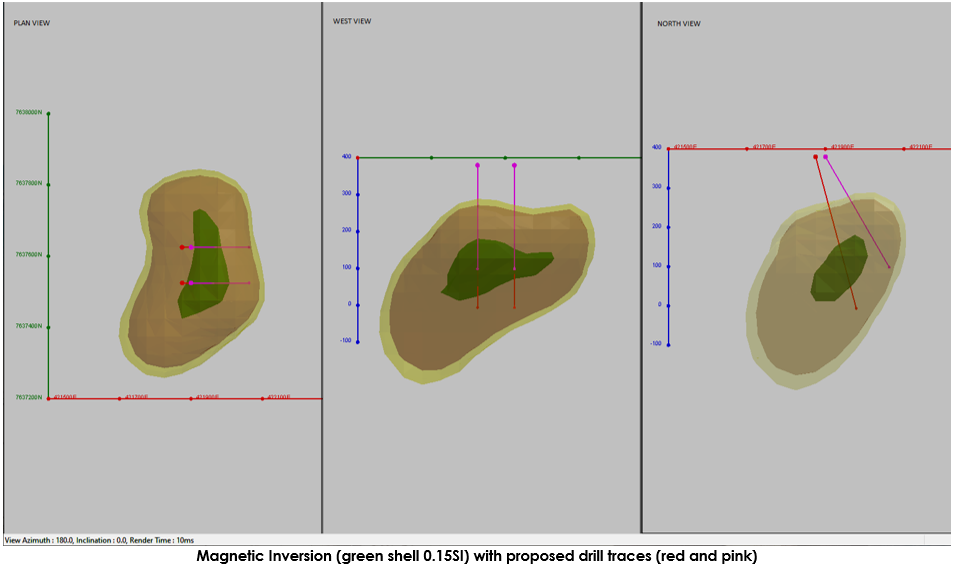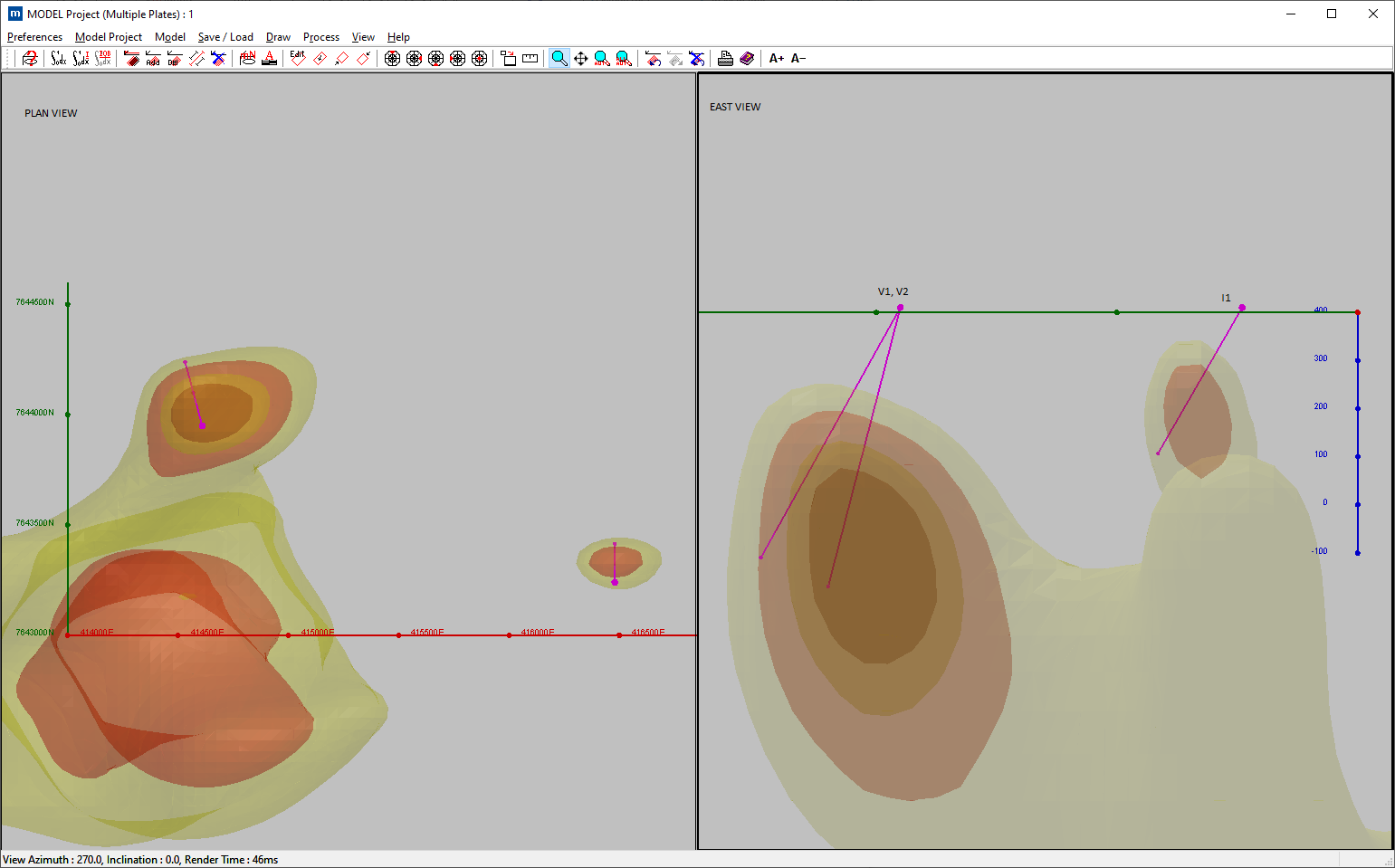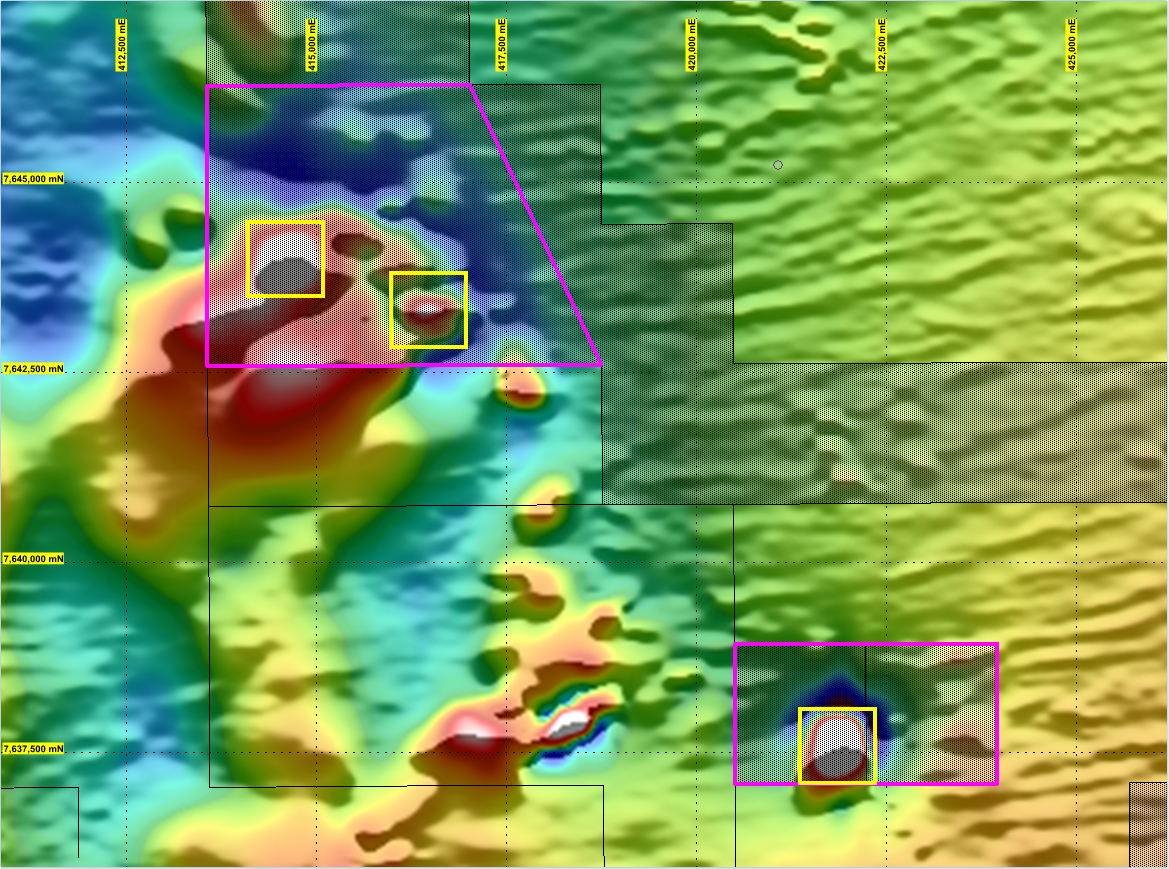West Arunta
Niobium ± REE, Iron Oxide Copper Gold
STANSMORE PROJECT
The 100% owned West Arunta Nb-REE Project granted tenure extends over 173km² and is approximately 90km north of WA1 Resources Limited’s Luni and P2 discoveries. The project hosts three potentially significant magnetic anomalies (Stansmore, Volt and Ions) and three secondary targets (Edi, Earl and Menlo) interpreted to be prospective for carbonatite-hosted Nb-REE and intrusion-related gold copper mineralisation,
The Company has completed a maiden drill program testing the Stansmore target which was designed to test the central peak of a regionally prominent, 500m diameter magnetic anomaly.*
The single reverse circulation (RC) drillhole, STRC01, was completed in December 2024 and drilled to a depth of 324m. The drill hole intersected a variably magnetic mafic intrusive with trace sulphides within the fresh rock below 80m depth. Zones of elevated sulphides and chlorite alteration were logged however, no lithologies typical of carbonatites were intersected.** Assays indicated elevated silver (Ag) and copper (Cu) at the base of the weathering profile/top of fresh rock, which is likely to be related to supergene enrichment of the mafic intrusive. This result is likely to be shear- related and is not determined to be significant, and is not considered to warrant further follow up drilling.
Assessment of additional geophysical targets within the West Arunta Project is continuing.
* Map of Solara Minerals mining projects highlighting various locations like Myrnas Hill, Pilgangoora, Wodgina, and Marble Bar.
** Annotations show project names, lithium ore quantities, and concentrations.
WEST ARUNTA OVERVIEW
The Stansmore Project has had limited historic work completed within the project area with the broader area having limited exploration focussed on gold, copper and diamonds. BHP Minerals Limited completed 6 shallow RAB drillholes over the Stansmore magnetic anomaly in 1983 (WAMEX Report A12302) exploring for diamonds. Drilling at the main Stansmore magnetic anomaly (ST2) consisted of 5 drillholes with a maximum depth of 12m. Lithologies intersected by the drilling included ultrabasic rock, ‘possibly pyroxenite’, and sericitic altered claystone. Overall, the results did not display kimberlitic affinities to potentially host diamonds and the tenement was surrendered in the following year. Encouragingly the RAB drilling has highlighted the shallow depth of cover and saprolite interface. The drilling did not adequately test the magnetic anomaly which starts at ~150m depth.
The WA1 discoveries at Luni and P2 have been large first order geophysical anomalies which had never been drilled.
The niobium mineralisation discovered to date at WA1 Resources’ Luni Project are unique to Niobium deposits globally due to the high tenor of niobium with results >2% niobium. The identification of Niobium and Rare Earth mineralisation associated with carbonatite intrusions by WA1 Resources and Encounter Resources nearby in their first ever drill programs signifies the extremely prospective and underexplored nature of the West Arunta.
NIOBIUM OVERVIEW
Niobium (Nb) is a ductile refractory metal that is highly resistant to heat and wear. Like tantalum, it is resistant to corrosion owing to the formation of a surface oxide layer.
Approximately 90% of niobium use is attributed to the steel industry, predominantly as a micro alloy with iron. The addition of small, relatively cheap, amounts of niobium (much less than 1%) significantly increases the strength and decreases the weight of steel products. This results in more economic, beneficial products for use in the construction industry, in gas and oil pipelines, and in the automotive industry where weight savings result in increased performance and fuel reduction.
Niobium, along with other refractory elements such as tantalum, is also used in nickel and nickeliron superalloys, particularly for applications requiring strength and heat resistance. Uses for such superalloys include turbine blades in jet engines within the aeronautic industry, and gas turbines in the energy industry.
Niobium becomes a superconductor at very low temperatures. When alloyed with titanium (NbTi) or tin (Nb3Sn), it produces the superconducting magnets used in magnetic resonance imaging (MRI) scanners, nuclear magnetic resonance (NMR) equipment and particle accelerators such as the Large Hadron Collider at CERN (The European Organization for Nuclear Research).
Niobium is one of a suite of commodities identified by the Australian Government as critical minerals, i.e., minerals (or elements) considered vital for the well-being of the world's economies, yet whose supply may be at risk of disruption. Niobium is essential for advanced technology.

West Arunta Regional Map

Stansmore 3D mag inversion

Volt and Ions Prospects Magnetic Inversion

Topographic map showing Stansmore Nb-REE Prospect area with labeled locations: Volt, Ions, Edi, Earl, Menlo, and coordinates E80/5723, E80/5867, E80/5868. Features red and blue heat map contours and directional scale.

West Arunta ground gravity survey map

